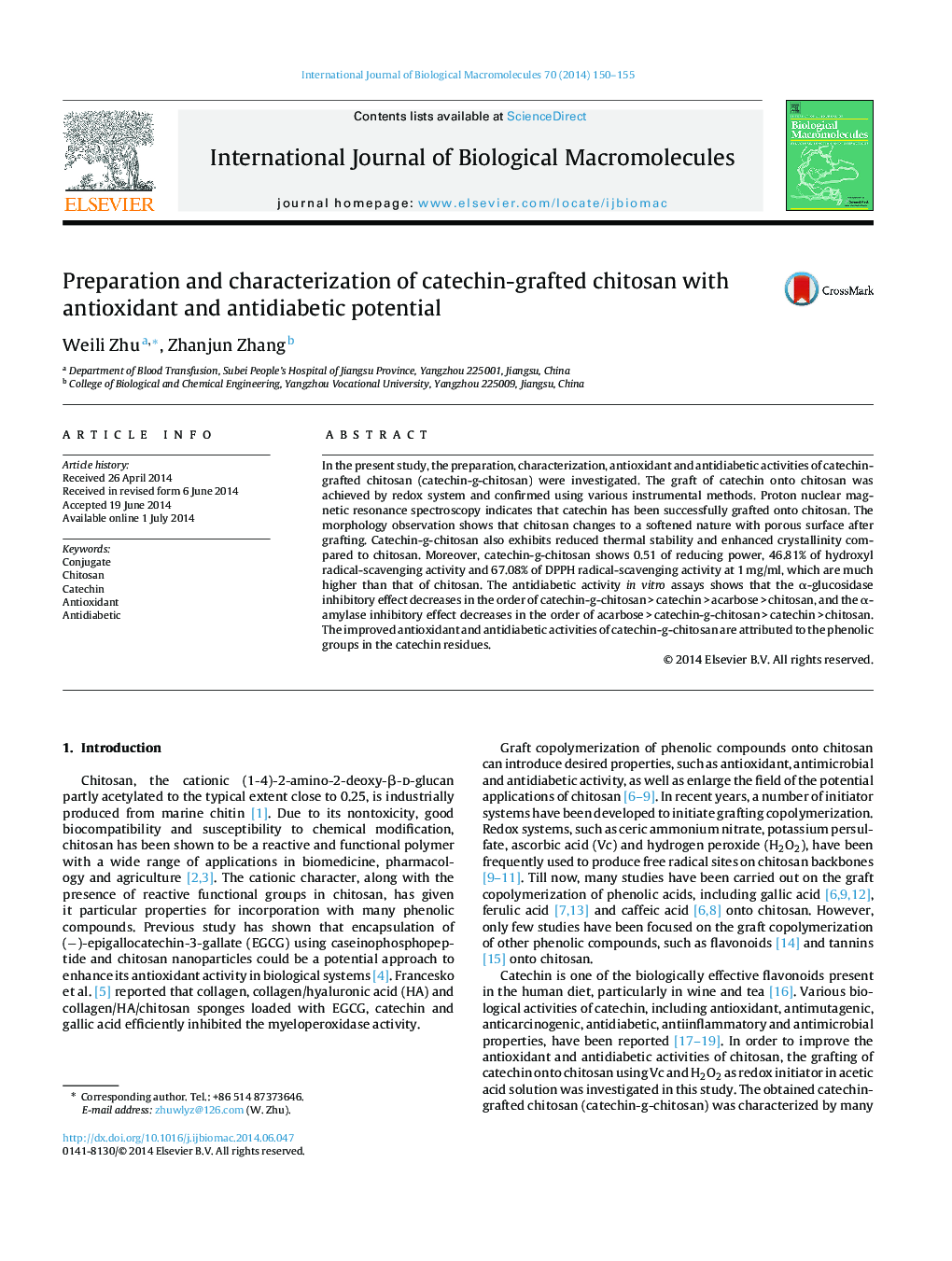| Article ID | Journal | Published Year | Pages | File Type |
|---|---|---|---|---|
| 1986320 | International Journal of Biological Macromolecules | 2014 | 6 Pages |
In the present study, the preparation, characterization, antioxidant and antidiabetic activities of catechin-grafted chitosan (catechin-g-chitosan) were investigated. The graft of catechin onto chitosan was achieved by redox system and confirmed using various instrumental methods. Proton nuclear magnetic resonance spectroscopy indicates that catechin has been successfully grafted onto chitosan. The morphology observation shows that chitosan changes to a softened nature with porous surface after grafting. Catechin-g-chitosan also exhibits reduced thermal stability and enhanced crystallinity compared to chitosan. Moreover, catechin-g-chitosan shows 0.51 of reducing power, 46.81% of hydroxyl radical-scavenging activity and 67.08% of DPPH radical-scavenging activity at 1 mg/ml, which are much higher than that of chitosan. The antidiabetic activity in vitro assays shows that the α-glucosidase inhibitory effect decreases in the order of catechin-g-chitosan > catechin > acarbose > chitosan, and the α-amylase inhibitory effect decreases in the order of acarbose > catechin-g-chitosan > catechin > chitosan. The improved antioxidant and antidiabetic activities of catechin-g-chitosan are attributed to the phenolic groups in the catechin residues.
